|
3/3/2020 1 Comment Everything is New... Every Day
1 Comment
9/15/2017 1 Comment It's So Hard to Sit Still!Supporting Your Horse in Stall Confinement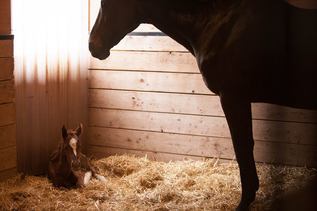 I love my horses. I love how amazing and athletic they are and how interactive they are with each other and with me. But just like kids {as my boyfriend likes to remind me constantly ;-) }, my horses have a habit of getting into trouble at very inopportune times. Rhea - especially. Rhea is my yearling Oldenburg filly. She had the great good fortune to choke on Christmas week last time I called the vet. This time - Labor Day Monday. I really think you have to have a good sense of humor to live with horses. Hehe. I am very appreciative of my vets, Centennial Equine, who are always on call to fix my ponies up - especially on those holidays! And they have always had amazing bedside manner, which is why Rhea is great with them when they come. She loves her vets! This time, she cut her hock up and due to the location, she is back in a small area to keep from busting stitches. Thankfully, she has learned to be in stalls from the beginning, so confinement is not a huge issue, but she is like every other baby horse. Standing in a small area is SO HARD! Having had to help her with this over the past week made me think it was time for a blog on ideas to help with confinement. Horses have a need to move (even your introverts!) so small spaces for long periods of time really bother them. Here are some fun ideas to help keep the boredom and isolation from driving your horse crazy:
Want a great treat for stall confinement? Omega Fields has yummy Omega-3 rich treats and the low-sugar/starch variety is a great way to spoil your horse while also being supportive of a healthy coat and healing! Follow my link below for 10% OFF! (Discounts automatically applied) 8/21/2017 0 Comments PEACE STARTS IN THIS MOMENT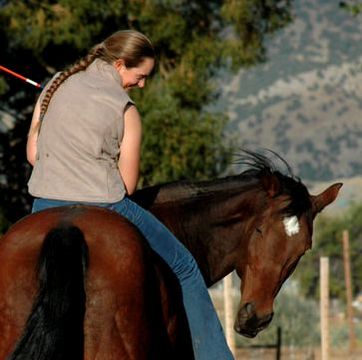 Unless you have had your head buried in the sand, you are probably very aware of the chaos that seems to be swirling throughout our world this week. No - I promise this isn't going to be a political rant - but the situations of our world today have made me look out there and then want to shrink back into my quiet little corner to find some silence again. There is one place in this world that I find the most peace. It is outside, it is in fresh air, and it revolves around the smell of hay and horse. My horses cause me to be quieter, to be more prepared, and to let go of the crazy of the world. Time with them makes me better; it makes me more human; it makes me more caring. If I am needing a moment to stop and relax, I drift to there. I drift to being with my horses, to being in the barn, and to riding. With my horses, I know that I am the sole person responsible for the lightness of the communication. I am the one who has the CHOICE to pay attention to the smallest moment of fear or insecurity or confusion. I have the ability to become lighter and to slow down or to be clearer. If we want the world to be more peaceful, we need to start in our own homes and with our most personal relationships. That can and SHOULD include your horses. This starts with the first moment you see your horses and proceeds through your interactions. The more aware and receptive you are to your horse's communication, the lighter the feel will be between you. Here are some ways that you can create a more sensitive and clear communication with your horses:
I look forward to hearing how these little tips influence your communication with your horse! If there is more peace and clarity in your relationship with your horse, then imagine how this can extend to your family or your friends. What if you could also take this out into your immediate sphere - and then the world? 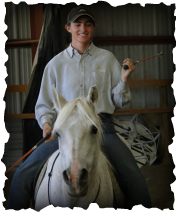 Hi Mattie, Can I Request a Blot Topic from you? The topic would be Clarity and in particular with voice cues and phases. I'm looking to get more consistent and refined for Star and my observations are many people see cues (mainly voice) and treats as the way to clarity and that increasing phases amounts to 'whacking'. I'm not convinced and think we maybe all missing something with either timing, effectiveness or other? Thanks! Sandra! Hi Sandra, No problem! This comes up a lot. Here is an article by one of our best 4-Star Instructors, Jesse Peters, discussing the different methods of training (positive reinforcement/negative reinforcement, etc.). He works with Zoo Animals as well as horses, so has a vast amount of experience with all kinds of predators/prey animals using Parelli methods: http://parellinaturalhorsetraining.com/news/parelli-methods-positive-negative-reinforcement-techniques/ As for the question about progressing phases verses cues/voice - it sounds like the concept that has not been grasped is the fact that voice/energy are always part of the first phase. If the horse does not understand, or if the human has not been CLEAR, EFFECTIVE, and UNDERSTOOD the person has had to resort to stronger/harder phases to get the horse to do something. Unfortunately, when this happens, the horse often times reacts to the threat, rather than consciously stopping to recognize what is happening and then answering the question presented. This confusion also can happen in the Positive Reinforcement camp, by the human becoming a cookie dispenser or by the horse suddenly exhibiting unusual behaviors (such as aggressive ears, over exuberant responses, demands for treats, becoming mouthy, dangerously invading a person’s space, or in the extreme perverted or monotonous behaviors, even ones that may seem okay if they were in moderation). I find that many horses need a TOUCH (i.e. contact of some sort - from a hand, the rope, the end of the carrot stick and/or string) to understand what is being asked. So often, we just need to clarify what part of the horse we are focused on or to help them understand that we are needing a RESPONSE. High phases, rather than justified phases, result in a REACTION or ROBOTIC behavior. Release – in either positive or negative reinforcement – is really what teaches. Good timing, a good release, and appropriate rewarding of behavior encourages that behavior again. If you are seeing high phases or horses that don't understand, the communication is not being clear and concise. I see the same thing happen with food/voice/cues --- they end up being bribes or manipulations rather than true communication. You also often see tricks, too, come out of methods developed by "positive" ideas or by ANYONE trying to create a desired response without the horse thinking the request through. A trick is something that you "cue" for (voice or body movements) to get a result but you couldn't stop or request in a different order because it is a practiced (monotonous) response that often becomes robotic in the horse's mind. The higher levels are about refinement and engagement (mind/body/spirit) so that you and your horse can work in harmony. So many times, we need to add better balance, biomechanics, and focus (mind, emotions, and spirit) in our bodies to achieve this. I just recently spent an entire weekend focusing people on CALM - CONNECTED - RESPONSIVE so they could build on exactly what you are asking about! If a horse has ANY adrenaline, they are not calm --- and if they react rather than respond, they are not calm... On the opposite end of the spectrum, a horse that is not thinking about your communication and also connecting that communication to what you are asking is not responsive. If the horse does know what you are asking but does not respond, that is also not being responsive. I liken this second part to someone texting on a phone. Have you ever had someone do that while you were trying to talk to them! It may be accepted today in society, but that is not a respectful or happy relationship! Miss either element, your horse will not be truly connected. As for voice commands, they will eventually be phase 1.5 --- as energy/intention is always phase 1 --- voice should be the follow up to reinforce the suggestion. Then you need to "go up the phases" to explain what you mean if the horse is confused OR "up the phases" to explain to the horse that the phase 1 should be their priority. I always repeat the question again at phase 1 to make sure that I was understood. If I am not, I will repeat the question and phases (effectively, not firmly) until the horse understands. Often times, when humans are first re-learning their body language, voice cues can actually distract them from focusing on their body, their timing, and their release. Humans use their voice and often block out many other necessary and important cues. Once you are ready, and have clear communication, voice cues enhance your relationship with your horse. It should feel easy and natural. And you definitely should not sound like a chicken, clucking so much that the voice is meaningless. It should be a brief, distinct cue, as are all other body cues. I hope that helps you on your journey! ~Mattie By Mattie Cowherd 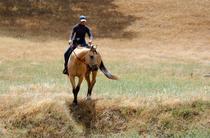 One of the biggest road blocks I hear from my students for Level 4 Finesse is their lateral movements. Common comments I hear sound something like this: “Laterals stink! Why are they so hard? They don’t work! I can’t tell where the feet are – I have no idea what all those fancy names are, or why I would want to do them. I am so confused, and the help I have received so far has only made me more so frustrated. Is it really this hard? What am I not getting?” One of my students even put it this way: “I felt like laterals turned my horse into an oversized Lay-Z-Boy recliner on cinder blocks!” The concepts of laterals can be quite complicated – case in point, pick up the nearest dressage training book, and you can see how many ways to manipulate your body and your horse’s body to “perform” a maneuver, while doing your best to look elegant, collected, and content. No wonder I don’t see smiling faces on many riders! If I had to think this hard about walking, I think I’d be tripping constantly. Surely, if it is something that horses and humans can do very naturally own their own, it would be easier to do the same maneuvers together. What are some ways that we as riders can make this easier? Taking the Basics Further: Connecting the Rein/Body Position to the Feet When I think of lateral maneuvers, I always try to relate them back to two things: the basic rein positions that all horses should learn (indirect and direct reins and lateral flexion) and where the horse’s weight needs to be in order to perform the maneuver. Lateral flexion at the halt will eventually translate to any flexion in the horse’s head and neck. For example: when a horse is making a circle to the right, he should have his head turned slightly to the right – even if it is only enough of a bend to see the horse’s eye and nostril. In fact, this slight bend, or arc, is usually all that you need for ANY lateral maneuver. You can choose which way the horse flexes his head and heck (even if it is counter to the direction of travel – hence the term “counter arc”). Our other two main basic rein positions are the indirect rein and the direct rein. The indirect rein is the rein you will use any time you want to influence the hindquarters of the horse. It is called “indirect” because of this. You are using the rein to move the opposite hind away from that rein, and cause the hind foot on the same side as the rein to step under the horse’s body. Your body weight needs to shift forward to encourage the front feet to stand still and to lighten and encourage the hind legs to move. The direct rein is the one that you will use to influence the forequarters of the horse. The rein is “direct” because the front foot is directly influenced by the rein on the same side. You can learn to control that front foot and even learn to place it into a position! You can lead the nose and the shoulder in the direction of the rein. Your weight needs to shift back onto the hind legs, in order to encourage the horse to “sit” and to lighten the front end. Your eyes also need to stay up so you don’t inadvertently weight the inside shoulder of the horse. Both of these reins will transfer to the appropriate set of feet to control your lateral maneuvers, so if the hind leg is trailing, use a slight indirect rein; if the shoulder needs to lead more, use a direct rein! (Homework alert: watch Level 2 FreeStyle for a review of Indirect and Direct Reins) The first lateral maneuver to practice is the side pass. A side pass is a straight sideways movement. The body needs to be straight so that the front and hind legs can cross equally and at the same time. You will use this maneuver for going sideways over obstacles, such as logs, as well as for opening and closing gates. This is a great exercise to start with, because it helps you learn to control the feet with your reins and body. You are going to need to fix one end of the horse or the other using your weight or leg position, and back these up with your reins in order to help your horse understand how to do this correctly (i.e. straight and equal, front and back!). Before we get into some more complicated maneuvers, let me mention a few tips for sideways maneuvers. · Tip #1: Most of the time when a maneuver isn’t working, it has to do with what your body is doing, especially your weight being in the “wrong” place (either too far forward – on the front end – or too far back, which is weighting the hind end). · Tip #2: If the maneuver feels hard, ride forward again immediately and check where your weight was or what rein position you were using. When you and the horse are in the correct balance, sideways should feel easy! · Tip #3: Pay attention to your focus. If you need more front-end movement, lift your eyes up; if you need more hindquarter movement, shift your eyes down. · Tip #4: In the beginning, give your horse a clear destination, such as a cone, so you both start to focus on the same place. · Tip #5: If your horse has trouble with the flexion of a maneuver (such as which way he should bend or look), start with a circle, go onto a straight line with the flexion for a few steps, and then go back to the circle to finish. · Tip #6: Have fun with them – sideways is always easier with exuberance! Advancing Sideways – Making it Fancy Now that we have some basics for our lateral maneuvers, let’s talk about some of the more advanced lateral maneuvers. The four maneuvers we will focus on are: leg yields, haunches in/out, shoulders in, and half pass. Each of these exercises builds on the previous by first creating flexibility, then strength, and then flexibility and then strength again. In the Classical Scale, you would build these exercises in this way: 1. Leg Yields – first off a circle, then in a straight line to create flexibility 2. Shoulder In – to start to build the horse’s strength and lighten the front end 3. Haunches In/Out – to create flexibility in the loins and strength in the hind leg 4. Half Pass – to create more strength and more lightening in the front end Though you can become quite technical in each of these maneuvers and really focus on exact foot-falls and tracks, let’s keep it simple for this article and talk about how these exercises relate back to the basic rein positions. Stretching Exercises: Based on the Indirect Rein Now that we have talked about the basic reins and positions and how the more advanced maneuvers should build on each other, let’s get a little more technical, starting with movements based on the indirect rein. Again, the indirect rein controls the hindquarters, and your body will come slightly forward to keep the front feet more still (don’t lean!). These maneuvers help create flexibility by softly stretching one side of the horse’s body at a time. The first of these maneuvers is the leg yield, and the second is the haunches in/out. A leg yield is a diagonal maneuver, in which the horse is going to walk forward and sideways equally. The horse will be in a counter arc and the weight is slightly tipped toward the leading shoulder. To ask for this maneuver, if you are going to do a leg yield to the left, you will slightly weight your horse’s front end and look down slightly (step into the stirrup, as Linda Parelli often says), asking for a slight right indirect rein. If your horse gets confused, you can also add leg support with your right leg. The leg yield is often the easiest maneuver for horses to learn, as they naturally want to “fall” onto the front end when they are traveling. This is a great exercise to help your horse learn to stretch the leading side, and it’s the first lateral maneuver introduced in the classical scale of training. Linda Parelli has also added it to her Finesse Training Sequence. Haunches in or haunches out is similar to a leg yield, but now you are asking the horse to start on a straight line and then move his hind legs slightly off the track of the front feet. The names “in” and “out” refer to where you are asking the horse’s hindquarters to move in regards to the center of the arena (X) – so if you are asking the horse to move his hindquarters away from the wall and toward the center of the arena, you are putting the hindquarters in. If you are asking the horse to put his hindquarters towards the wall and away from the center of the arena, you’re asking the horse to put its haunches out. When the hips move over, you are encouraging the horse to be more flexible in his loins. Also, when you move the haunches, one hind foot is going to step further under the body, which starts to build strength and power as well. Move the haunches, ask the horse to walk forward, and then shift your weight slightly forward and use your leg to push the hip off the line (if you are asking the hindquarters to move to the right, use your left leg and vice versa). If the horse gets confused, you can add an indirect rein as well. You don’t want the neck to bend, as the front feet should still be moving forward in a straight line. Both the leg yield and moving the haunches creates a horse that is more flexible and able to stretch its body. These maneuvers also help the horse become calmer, as the back and ribs start to relax. Strengthening Exercises: Based on the Direct Rein The maneuvers based on the direct rein are the shoulder in and the half pass. You are going to shift your weight back onto the hindquarters to lighten the front end, and then you are going to ask the front end to shift off the track. Since the hindquarters take more weight, you are going to build the horse’s strength to “sit” slightly behind. The shoulder in happens when you ask the shoulders to move off a track toward the inside of the arena. To perform this maneuver, shift your weight back onto the hindquarters and keep riding the horse forward. Ask the horse to shift his front foot over, off the main track, with a direct rein. To support the position for several steps, you can use the supporting rein to support the outside shoulder. Do in your body what you want your horse to do, by keeping your hips straight and lifting your sternum while turning your shoulders slightly. Keep your eyes up, too. The half pass is somewhat like a leg yield, in that you are going to ride forward and sideways equally, though now you are going to ask the horse to look in the direction of travel and bring his shoulders over slightly. You don’t want the hindquarters to trail behind (which would cause the movement to become a regular forwards again), so be prepared to “catch” them if they start to fall behind with an indirect rein, even while you are asking the horse to move the front end over. To ride a half pass, keep your weight back and your eyes up (at least the height of your arena wall – though the more you want the horse to elevate his front end, the higher you want to look). Both of these exercises really encourage the horse to build strength and the ability to carry his body more efficiently on the hindquarters. These will both result in a more collected horse. Simple Practice Exercises Call the Footfall When you are riding your horse, see if you can close your eyes and call out when each foot hits the ground --- do this for several feet with each footfall, before changing to another foot. Have a friend make sure you are calling the correct foot. Once you are good at this at the walk, trot, and canter, have your friend call out which foot you should be looking for as an added challenge. This exercise will help you know where each foot is so that you can then “feel” and influence it for lateral maneuvers. Ride on the Trail – Place the Foot When you are on a distinct trail or roadway with grass/dirt tracks, this is a great exercise to begin to teach the lateral maneuvers, and also keeps you from drilling the moves too much or asking for them too long in the beginning. Ride down the trail with a good forwards (freely forward). While moving forwards, see if you can ask either a front or hind foot to step off the main track for a step or two, and then return to the track. Think about “putting” the foot onto the grass, for example, but DON’T LOOK DOWN! Keep your eyes up and in the direction of travel. Build up to several steps with each foot. Once you are good with one foot at a time, start to play with walking forward and sideways at the same time. Start on one side of the track, and while keeping the horse’s body parallel to the track and still moving forwards, ask your horse to move sideways to the other side of the track. You can also do this on a road once the horse’s confidence has built up. Once the sideways feels easy, see if you can start shaping it for one of the lateral maneuvers. This exercise gives you and your horse a clear destination, and helps you know exactly where you are going. It also helps keep things simple and clear. It can be quite fun! To translate this to an arena later, simply imagine a “track” in the arena and ride it just like you did out on the road or trail. Riding the Maneuvers: It Should Feel Easy! These advanced riding maneuvers are useful skills to add to your training arsenal. Each exercise helps a horse develop strength, straightness, flexibility, and overall balance. Lateral maneuvers are not something to expect overnight. See if you can pepper them in at fun times during your rides. You can even take advantage of a “crooked” horse by pretending that their body position was on purpose – such as when a horse comes around a corner and falls in slightly: “Thank you! I wanted to practice that shoulder in here!” Your attitude towards sideways should be fun and playful. Realize that your horse may be using muscles that he doesn’t normally use. If something doesn’t work, laugh and try it again. It should feel like a dance, and the moment it does not feel that way, ride forwards again. When one of my students started to understand this concept of lightness and controlling the weight and feet, she described lateral movements like this: “I think it's the difference between pushing a chair and pushing a ball. Now I'd say she's like a lawn chair; pretty soon she'll be light as a ping pong ball, but being a lawn chair is better than my horse being a Lay-Z-Boy!” Just wait until your horse becomes a ballet dancer! Review of the Terms (Bolded Above) Basic Rein Positions: Lateral flexion, indirect rein, and direct rein. For a review of these basic rein positions, watch Level 2 FreeStyle. The Horse’s Weight: The set of limbs with which the horse is carrying the majority of his body weight, and also a shift in a horse’s balance. Think of this with humans – you can put your weight on one leg or the other, lean forward and backwards or even sideways, etc. Lateral Flexion: A horse flexing his head and neck. In the basic form, this means that the horse will bend his head to the side at the halt. In more advanced forms, the head and neck will turn to varying degrees. Arc: A bending of the horse’s body in the direction of travel. For example, the horse is trotting on a circle to the right and has his head bent to the right slightly. Counter Arc: A bend in the opposite direction of the horse’s travel. For example, the horse is traveling a circle to the right, but his head and body are bent slightly to the left. Indirect Rein: The rein you will use any time you want to influence the hindquarters. You are using the rein to move the opposite hind away from that rein, and cause the hind foot on the same side as the rein to step under the horse’s body. Your body weight needs to shift forward to encourage the front feet to stand still and to lighten and encourage the hind legs to move. Direct Rein: The rein that you will use to influence the forequarters. The rein is “direct” because the front foot is directly influenced by the rein on the same side. Your weight needs to shift back, onto the hind legs, to encourage the horse to “sit” and to lighten the front end. Your eyes also need to stay up, so you don’t inadvertently weight the inside shoulder of the horse. Leg Yield: A diagonal maneuver in which the horse is going to walk forward and sideways equally. The horse will be in a counter arc and the weight is slightly tipped toward the leading shoulder. Haunches In: You are asking the horse to start on a straight line and then move his hind legs slightly off the track of the front feet by putting the hindquarters closer to the center of the arena (and away from the rail). Haunches Out: You are asking the horse to start on a straight line and then move his hind legs slightly off the track of the front feet by putting the hindquarters away from the center of the arena (and toward the rail). Shoulder In: You ask the shoulders to move off a track toward the inside of the arena. Half Pass: You ride forward and sideways equally and ask the horse to look in the direction of travel, and bring his shoulders over slightly. You want to make sure the hindquarters continue to carry weight and step under the body, too. 4/30/2015 0 Comments CAN YOU?I LOVE MY STUDENTS!!! You are all an inspiration to me every day. I have a lovely clinic with the Durango, CO students - Horsenality and Problem Solving. There were lots of laughs and A-HA's! The Crestone group kicked off with a great first lesson day, too! I had to share the inspiration with a new CAN YOU -- with Gail and her two lovely horses, Foxy and Gypsy! I'd love to hear how everyone does! 8/18/2014 0 Comments It's ALL IN THE SET UP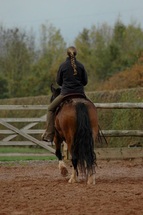 One of the very most important things MY instructor told me when I wanted to be a professional was, “It’s all about how you set it up – if you are not clear enough in the beginning, you will know it later! The better you prepare yourself and your students, the better things will go.” And, just as so many things do, I have found this statement to fit with my horsemanship as well (and many other areas of my life!). So often, I can see horses that are high headed, confused, acting out (rearing, bucking, striking, etc.), afraid, or defensive… and guess what the common denominator is in all of these problems? The HUMAN! Not to say that we don’t love our horses or that we wouldn’t do anything for them. It’s just all in the set up. Perhaps the person is not being as clear in his/her communication. Perhaps the horse is used to being in charge and is not sure if it agrees with the “trainer” that he/she deserves to lead. Perhaps the human is afraid, which in turn scares the horse, and the horse starts to push back in an attempt to either have a leader or become the leader. Horses are really quite simple in their first, and most important, need. They want to feel SAFE. If you meet this need, by being a calm, confident, and thoughtful leader, the horses will immediately start to be calmer, braver, and more like partners. The way that the human approaches the horse will immediately determine how the relationship will go. If you approach the horse with a calm demeanor and respond to anything that the horse does with no emotion, the horse will in turn relax and start to wonder what it can do to communicate in the same way. If the human comes to the horse with the attitude of making the horse a servant or dominating it, the horse will often respond in fear or dominance as it feels its survival is threatened. In the end, each of us will want certain qualities in our horses. Some may want more obedience where others may want more exuberance (opposite of obedience, offering more effort than asked for, etc.). Some may want to develop a horse with more responsiveness and more go. Others may want the horse to slow down and be more thoughtful. Whatever you personally desire, may be perfect for you and your horses. There are some common qualities that all horsemen should develop (Pat’s 10 Qualities of a Horseman): heart and desire, respect, impulsion, flexion, attitude, feel, timing, balance, savvy, and experience. The first four are for both the horse and the human. The rest --- well, those are up to us to develop! (To hear directly from Pat on these qualities, visit your Parelli Connect Learning Library for audios on the 10 Qualities or read the Qualities from Pat’s original book, “Natural Horsemanship”). So what do you want from your horse? From your partner or your friend? What can you do to change your set-up so that you can have a calmer, happier, and more fulfilling relationship? I’d love to hear your comments! 4/21/2014 3 Comments The Silence between the notes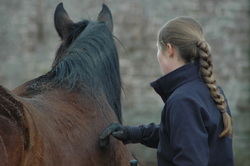 I always feel so at peace after a day of riding. In the moment, I can drift away from the past and the future and simply BE - I find this state particularly soothing. I have found that in general, my horsemanship has moved in this direction for the past few years. I now believe that having peace and calmness is the true art of horsemanship. This goes for even the faster things that we do with our horses. I still laugh at some of my students' faces when I galloped past them on a fat little cob during a trail riding clinic in Wales --- eating an apple! I think that single image drove home for them more strongly than anything else I taught that clinic that even with faster gaits and activities, both you and your horse can be in a total state of connection and calmness. But how does one achieve this? I believe it comes first through awareness - first of yourself and then of your horse's - internal and external states. Are you tight? Are you worried? Is there a good reason for this? Can I foresee any issues during my ground session or my riding and if so, can I simply avert it by being passively proactive? And can my horse check in with me and see that things are indeed okay? Can he see that I have been a patient and progressive leader for him? Can he trust that I will not be afraid or offended by what he needs to do? Perhaps I notice more strongly now what a true partnership feels like because I know now what a false partnership feels like. I can feel the lack of attention and the lack of trust. I can feel the harmony and the moments of true oneness. I can feel the moments when my horse and I are slightly out of sync, and yet, I can also very patiently and simply refocus my energy and my intentions to bring us back to harmony quickly. It's like a dance - you can't dance with another when you are both so intent on correcting. Like in music, you need silence between the notes. You need to separate the moments between the motions. It is this present PRESENCE that is so important to our communication and relationship with our horses. It is when you get yourself trapped in the past or the future that your heart, your soul, and your mind get you in trouble. The horses are only in the now - with memories of certain past experiences, certainly - but no fear of something that does not exist unless it is also in the present. It is a lesson for us all. Just as with everything, Horses Teach Humans and Humans Teach Horses. Enjoy the dance! I look forward to hearing your thoughts. ~Mattie 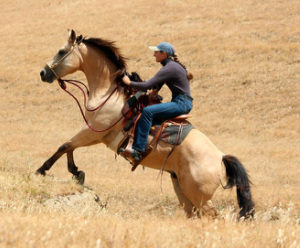 These last few months have been filled with lots of questions - lots of hurt, lots of truth being revealed in its sometimes dark completeness, lots of wondering what I truly want next, lots of debating with myself if I really know, if I really want to. There are days that I just want to fall onto the ground and stay there. It is those times that I have had help getting back up - from friends that have proven true, from family that have proven loyalty, and from myself. It is this last piece - myself - that I would like to honor today. I feel like it is the day that you find yourself without a goal, without a dream, that you must ask yourself the TRUE QUESTION: If you have nothing, what do you truly want? If you have nothing, you have the whole world to dream, to look ahead. So I have to ask myself: What do I truly want? I am so blessed to have a pair of horses that are amazing, a dog that makes me laugh, a group of people around me to remind me every day that I am here for a reason. And so today, like every day before this, I will get up off the ground, look ahead, and start to dream again... dream big enough for the world. And then some. ~Mattie TO MY READERS: What do you dream? If you have the world, what is your greatest desire? What do you do to pick yourself up when you are down? I look forward to hearing from you! |
Archives
March 2020
AuthorMattie Cowherd loves sharing her passion for horses, nature, and learning. Join her for some fun thoughts and adventures. Mattie loves writing, teaching, horse care, and --- well --- horses! Categories |
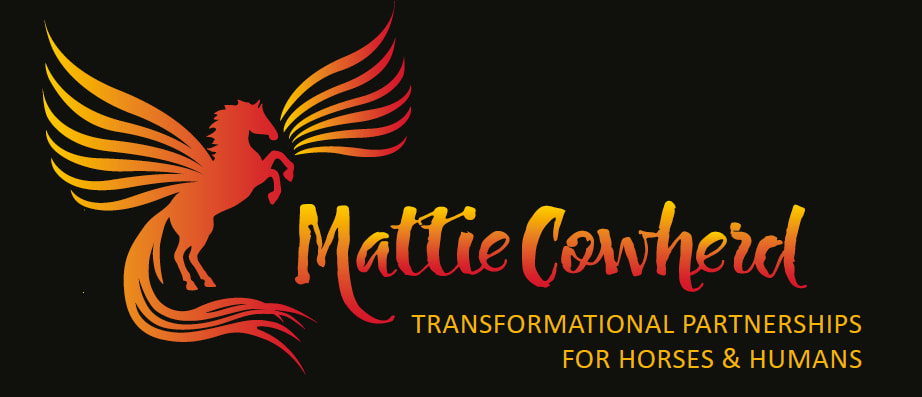
Holistic Equine Partnerships - Care, Instruction, and Healing Natural Horsemanship Instruction and Training Performance Horse Barefoot Hoof Trimming and Bodywork |
Mailing Address:
P.O. Box 247 Bayfield, CO 81122-0247 Phone: (970) 880 - 2844 Email: [email protected] |
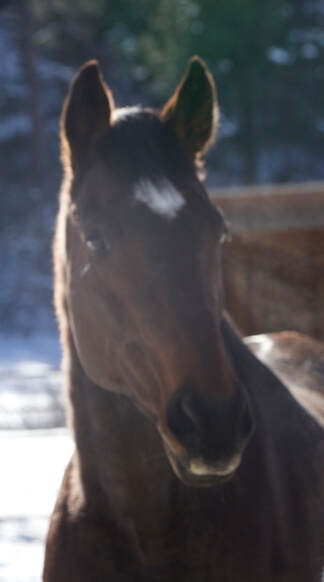

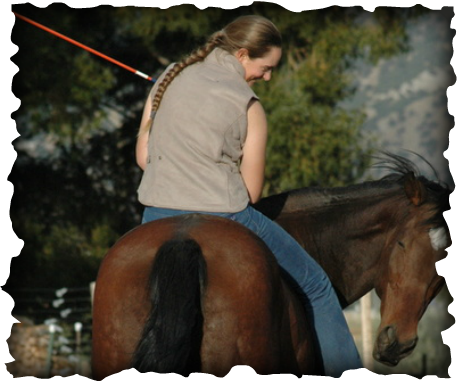
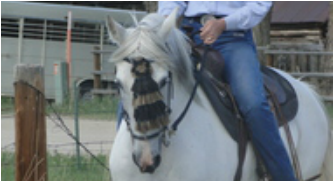



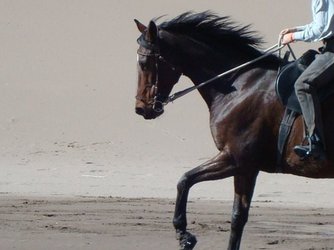



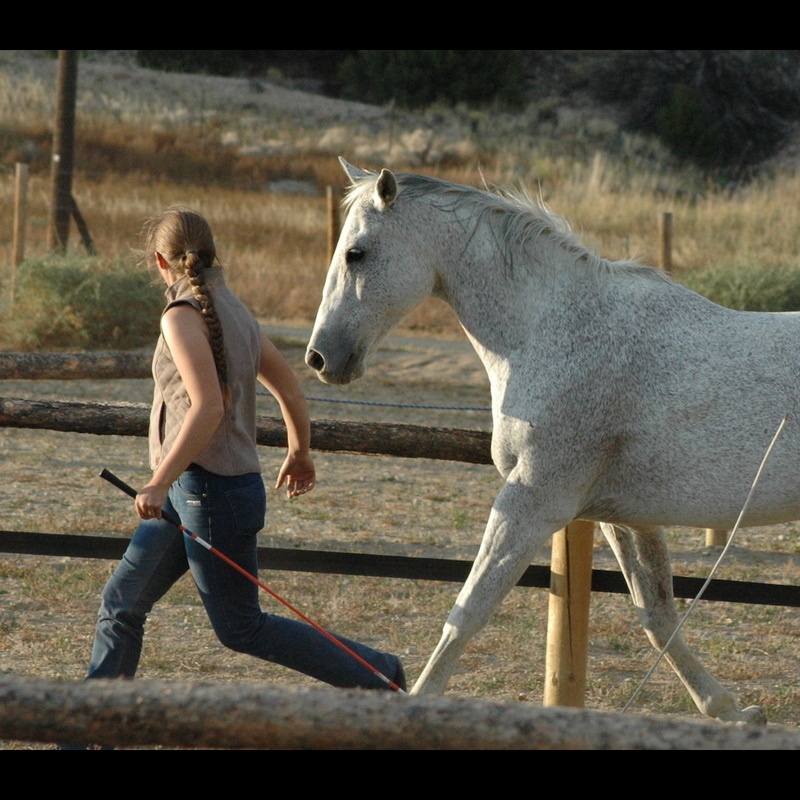
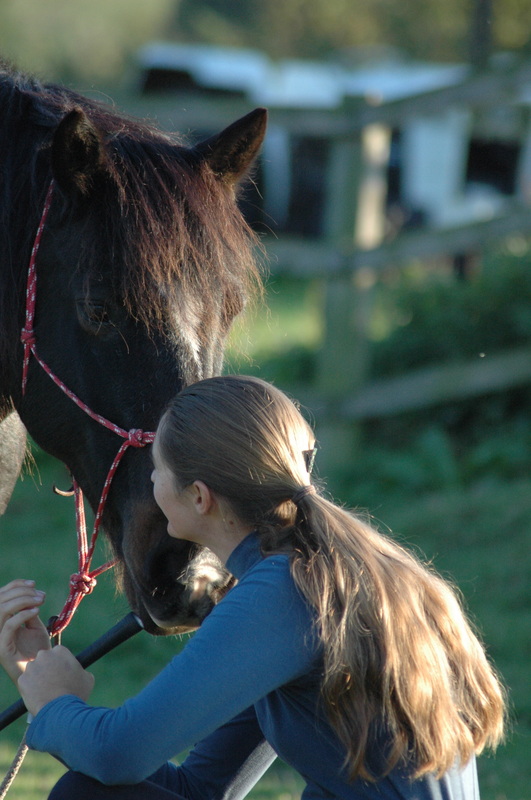
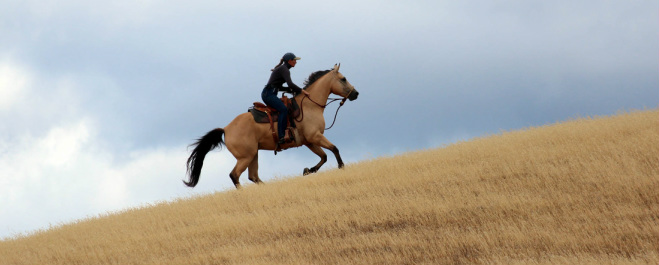
 RSS Feed
RSS Feed